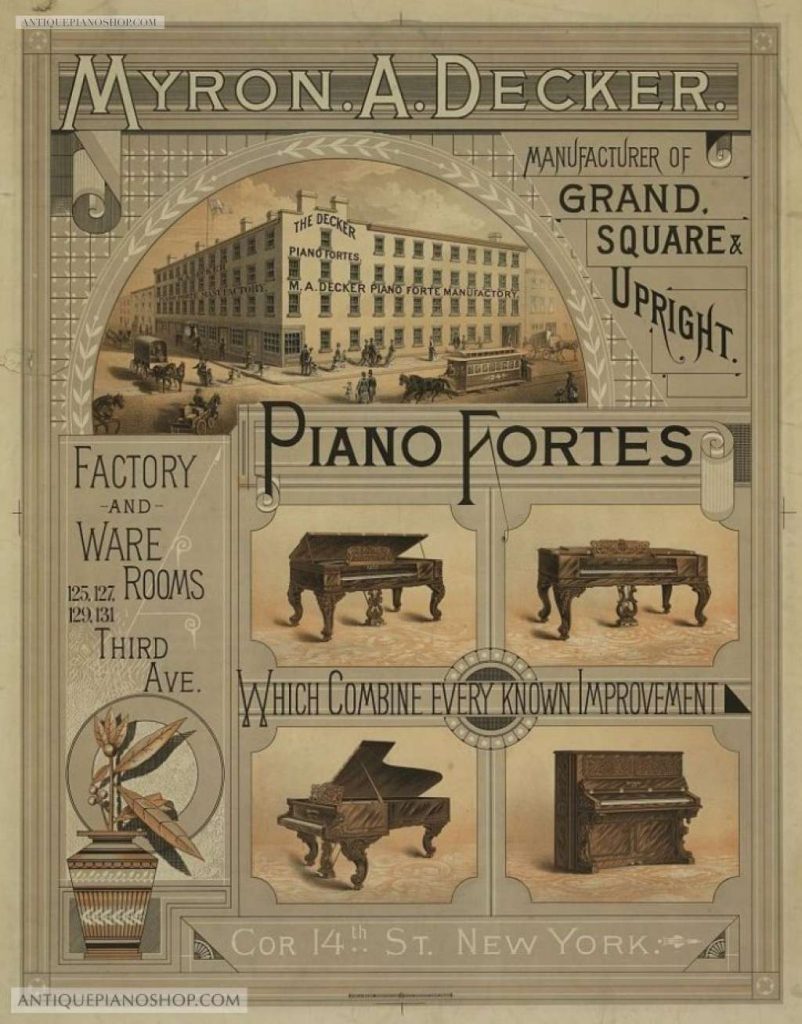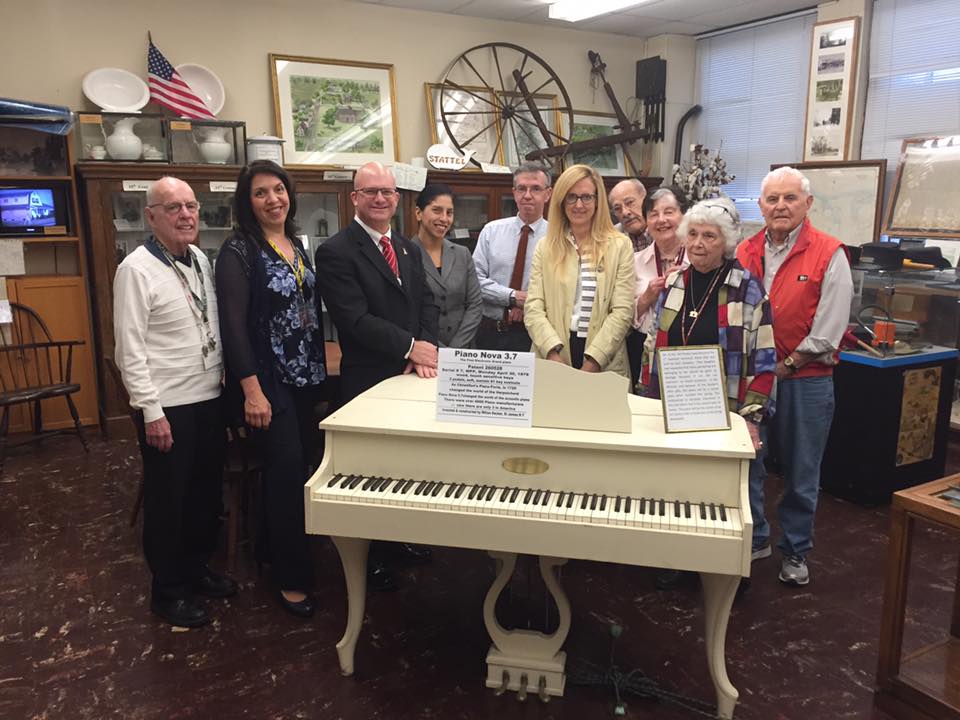A Little History
A Little History About Decker Pianos
The piano's evolution spans from its acoustic roots to modern digital marvels. Initially acoustic, it dominated music for centuries before electric pianos emerged in the mid-20th century, offering amplified sound and portability. However, it was the advent of digital pianos in the late 20th century that truly revolutionized the landscape. Digital technology allowed for precise replication of acoustic tones alongside innovations like portability and recording capabilities. Today, digital pianos continue to evolve, integrating advanced features like enhanced connectivity and realistic touch response, empowering musicians with unparalleled creative freedom.
In the 1850s, a number of piano companies bearing the name "Decker" emerged in various parts of the United States, all dedicated to crafting high-quality pianos. Myron Decker embarked on his piano manufacturing journey in 1856 in Albany, NY. By 1858, his dedication and craftsmanship were recognized when he received the prestigious "Best Piano Exhibited" award at the Syracuse State Fair. As the business grew, necessitating a larger factory, Myron Decker relocated it to New York City.
In 1882, the Decker legacy continued as Myron brought his son, Frank Decker, into the business, and the company became known as "Decker & Son." Remarkably, Decker & Son was one of the few American piano manufacturers to weather the storm of the Great Depression, persisting in piano production until around 1949. The last pianos produced bore serial numbers in the 254,000 range—testament to a century of meticulous hand craftsmanship.
Fast forward to the 1970s when electronic musical instruments became more accessible. During this period, none of the available instruments featured "touch sensitivity." It was at this juncture that Mr. Wilton Decker, my father, made history. In 1979, he introduced the world to the first electronic grand piano, a creation that earned him a patent in 1981. His innovation included the pioneering full-touch-sensitive keyboard and functional pedals including a sostenuto pedal, setting the stage for a new era in music technology.
Explore this fascinating electronic evolution of the piano, visit this LINK


Now, let's shift the spotlight a bit and talk about me.
In the late 1970s, following my service, I ventured into the world of piano tuning and teaching piano lessons in California. Although my initial aspirations leaned towards a musical career, an unfortunate finger injury derailed those plans, leading me down diverse paths in electronics, aviation, teaching, and cybersecurity. Throughout these endeavors, one constant source of solace and joy remained—the piano. It allowed me to convey my emotions, whether joyful or melancholic, by "tickling the ivories" throughout my life. The piano was a steadfast companion, indifferent to my mistakes or successes.
Now, surrendering from the workforce, I find myself returning to the late 70s in spirit, (sure wish it was in body too!). I've reignited my passion for the piano and have resurrected my piano business. I'm starting by offering beginner piano lessons and plan to expand into piano repair and tuning once I've cleared out the garage!